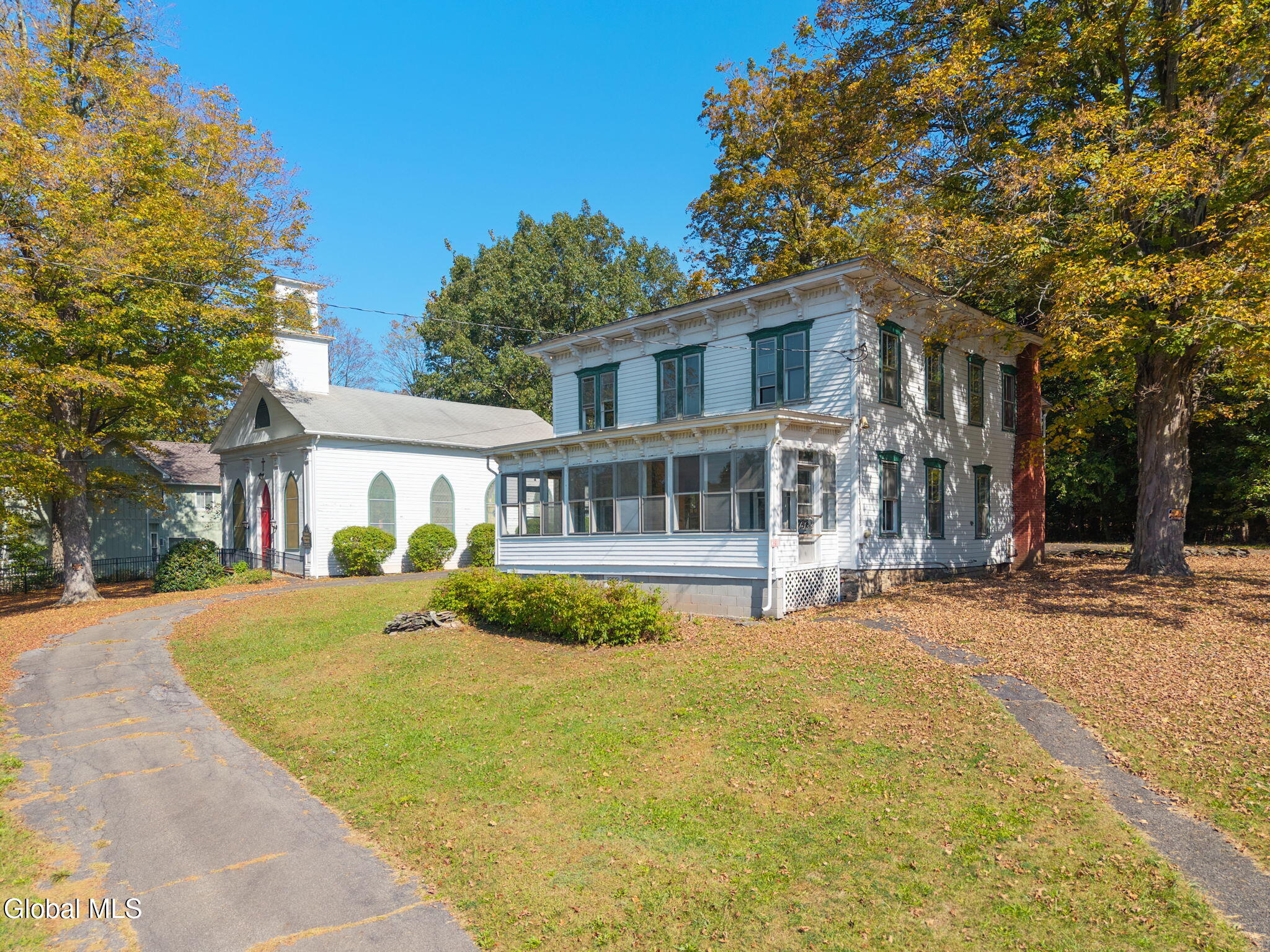Flushing Avenue Bike Lane Plans Revealed
The Department of Transportation presented its plans to remake Flushing Avenue as part of the ongoing master-planning of the 14-mile Brooklyn Greenway. Streetsblog, where this image first appeared, summed up the plan this way: The Flushing Avenue project would construct a two-way bike path from Williamsburg Street West to Navy Street, separated from traffic by…


The Department of Transportation presented its plans to remake Flushing Avenue as part of the ongoing master-planning of the 14-mile Brooklyn Greenway. Streetsblog, where this image first appeared, summed up the plan this way:
The Flushing Avenue project would construct a two-way bike path from Williamsburg Street West to Navy Street, separated from traffic by a nine-foot planted median. Vehicle traffic would travel in one westbound lane, between two lanes of parking. Only three curb cuts providing vehicle access to the Brooklyn Navy Yard would interrupt the bike path along the length of the project. Passengers on the B69 and B57 would disembark at bus bulbs constructed in the center median, with eastbound bus routes diverted to Park Avenue.
We’re still not used to those weird parking lanes over on Kent, but hopefully that planted median will make this one work better. There’s a planning workshop for the Greenway at Borough Hall on March 25th. You can also support the non-profit Greenway by attending the fundraiser tonight at ñ in Dumbo from 6 to 8 p.m.
Flushing to Get Two-Way Protected Bike Lane [Brooklyn Paper]
DOT Proposes Flushing Ave Bikeway [Streetsblog]





Well said, bkrules.
“shops and offices on Kent Street are what make the city successful”
kent st- not a good example for 1) shops 2) offices 3) a successful city. But point taken.
bkrules – respekt
I’m surprised to hear that kind of backward thinking coming from Minard, who usually expresses a more nuanced understanding of how cities work. I’m not at all surprised to hear the comments coming from Rob.
people who use things with wheels (bikes, cars, rollerblades) are just so primitive and lame.
*rob*
bkrules — Here Here!!!
FYI: European gasoline prices are approximately 2 to 2.5 times that of the U.S. average, depending on the country/region. Diesel fuel has a slightly lower premium in comparison.
“Traffic is the death of cities.”
Dead cities don’t have traffic. Traffic is a consequence of commerce, activity, and life in general.
This looks great. And it’s not putting cyclists above cars–there’s three freaking car lanes! Yes, two are for parking, but drivers really seem to love free parking.
Those turning bays make a huge difference when it comes to keeping traffic moving. Without sacrificing safety of other cars and of pedestrians!
Nice work.
“Bottom line to me is that cities, especially big successful cities, are all about traffic.”
No, they’re not. It’s people like you who argued there was no point fighting crime, because big, successful cities are all about crime. But it turns out that with less crime, our city became bigger and more successful. Crime is a bug, not a feature. So is traffic.
Successful cities enable efficient transport while preserving a decent quality of life. Part of making a successful city is catering less to the preferences of drivers passing through neighborhoods and more to the needs of the people living and working in them. Because dense, productive neighborhoods are what make cities work.
This design allows people to pass through this neighborhood pretty efficiently in a car, but more importantly, it significantly enhances and supports the quality of life for people in the neighborhood while giving them transport options more suited to a productive, liveable city. That’s really important. If you don’t live near Kent street, you might just care how long it takes you to get through Kent street. But the reality is that the pedestrians and shops and offices on Kent Street are what make the city successful, not the road through Kent Street.
Cities don’t depend on cars for efficient transport–they are so dense that walking or biking or mass transit become more efficient than driving in most cases. This is a good thing. Supporting this density allows us to create an economic region that is far, far more productive than one where the most efficient mode of transportation is putting people in cars.
If most of the time your best transport option is to drive, you either don’t live in a city, or you live in a city that is foolishly squandering its productive capacity.